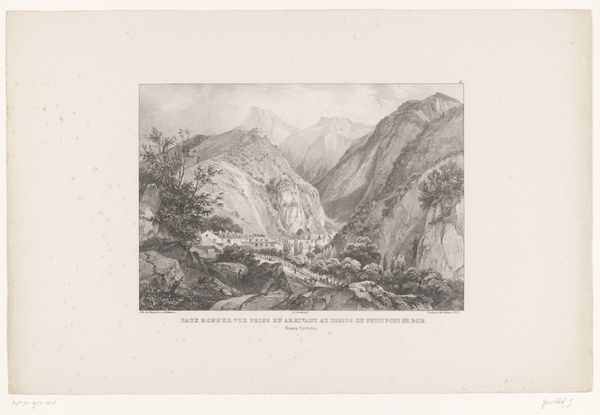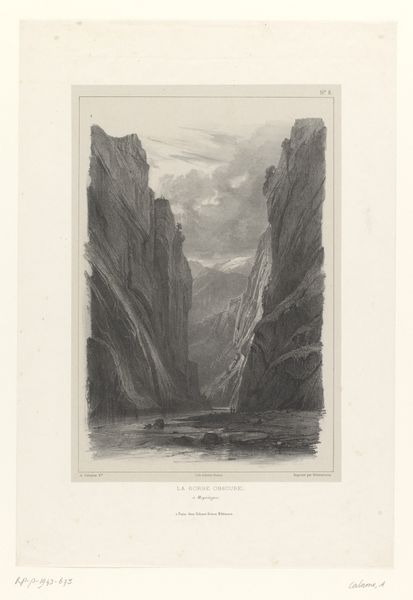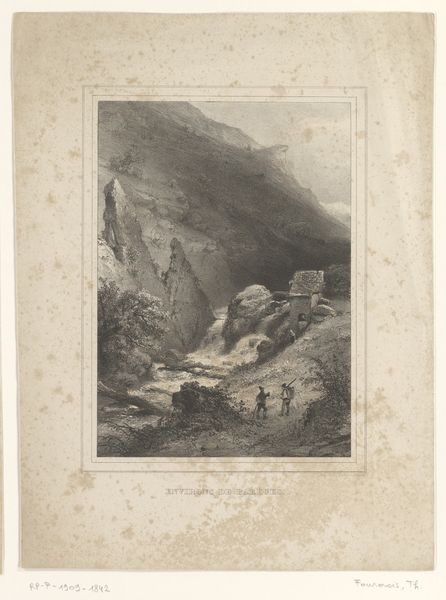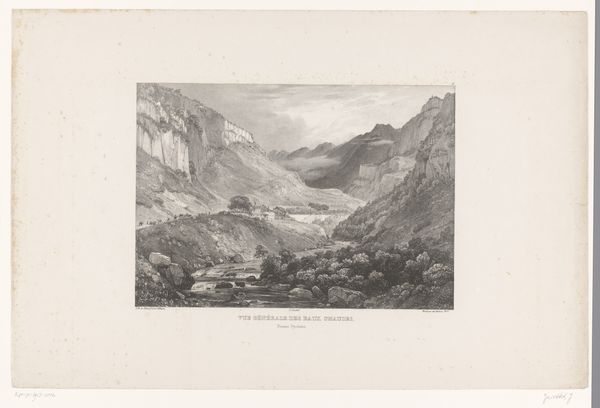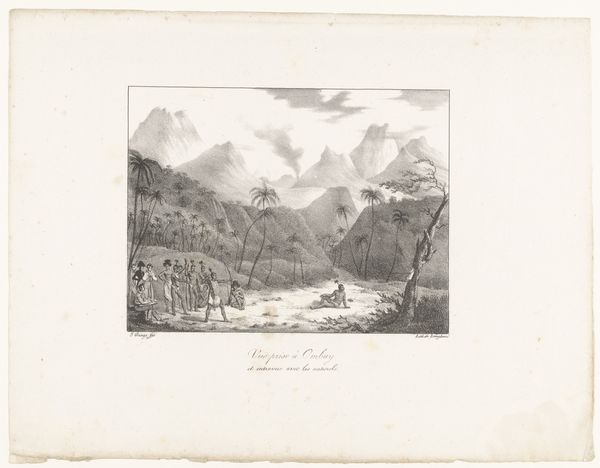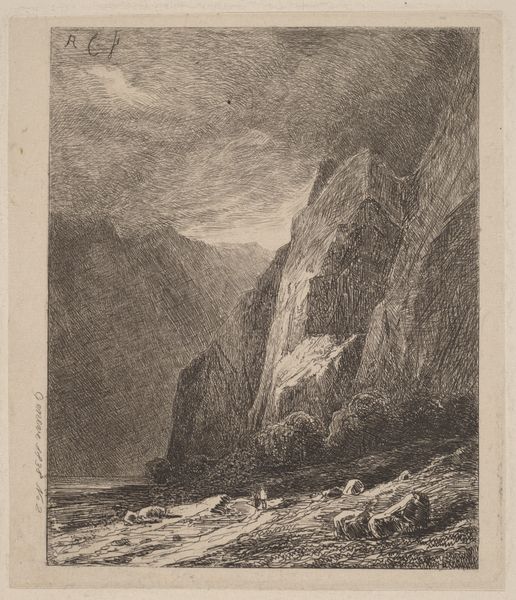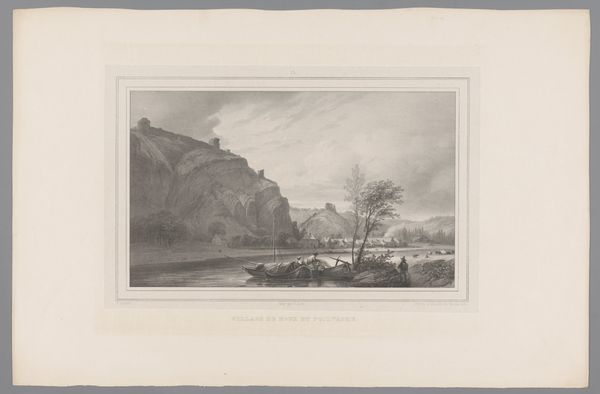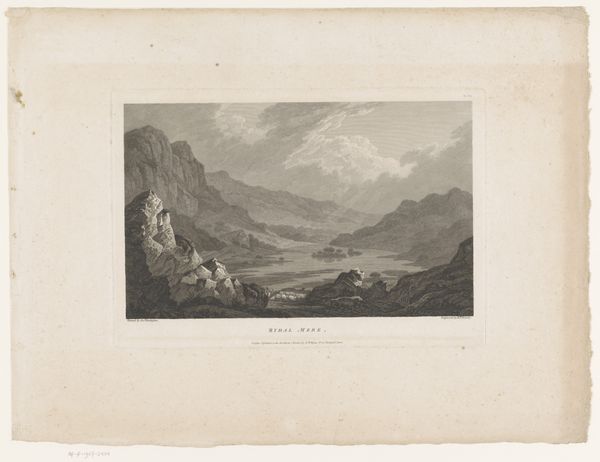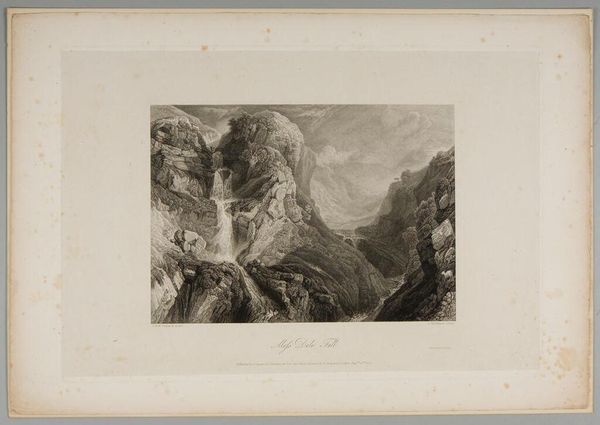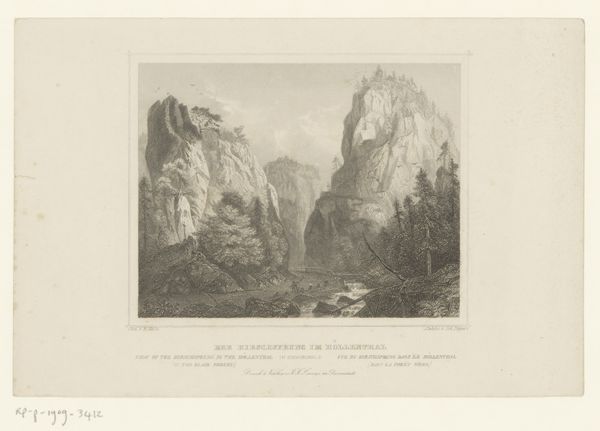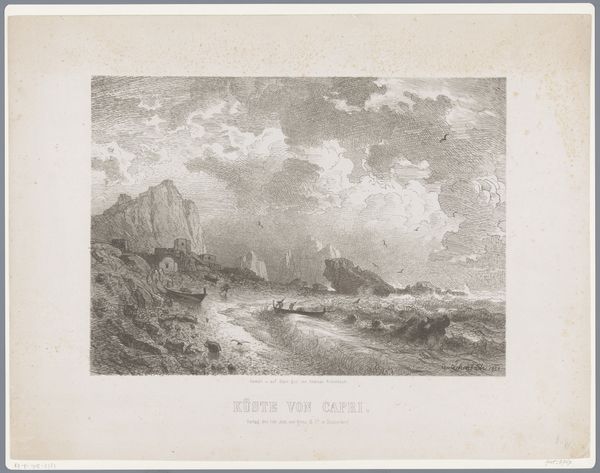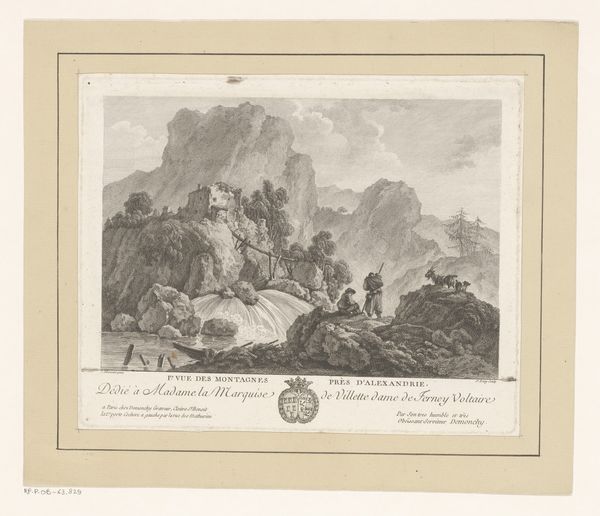
print, etching, paper, engraving
# print
#
etching
#
landscape
#
paper
#
romanticism
#
genre-painting
#
engraving
Dimensions: height 549 mm, width 360 mm
Copyright: Rijks Museum: Open Domain
Curator: Paulus Lauters created this print, using etching and engraving on paper, titled "Vrouw haalt water bij de ruïnes van Samson," placing it between 1839 and 1841. We find it in the Rijksmuseum. Editor: There's a striking stillness to this image despite its depiction of ruins and labor. The delicate shading creates a somber mood, almost elegiac, wouldn’t you agree? Curator: It’s interesting you mention the somber mood. Lauters, though less known today, was part of the Romantic movement, known for its embrace of emotion and nature. I think it highlights a period of both social and artistic reconstruction following a major revolution in that region. The Dutch were renegotiating their sense of place. Editor: Ruination and Romanticism definitely go hand in hand. Samson, of course, a figure of great strength brought low, blind, humiliated… ruins act as powerful symbols of mortality and lost glory. The woman fetching water presents an interesting contrast, doesn’t she? Everyday life persisting amidst historical wreckage? Curator: Precisely! The “genre painting” aspect brings in this mundane aspect that juxtaposes grand narratives with the daily existence of common people. It humanizes history, showcasing continuity between a mythologized past and the present. The choice to depict a woman is notable; perhaps speaking to the idea of resilience being embodied by the feminine spirit? Editor: I like that perspective. It speaks volumes about cultural memory, particularly how symbols can transcend mere historical events and tap into deeper archetypes of loss and renewal. Even the water she collects feels symbolic, suggesting cleansing, rebirth. Curator: And it presents how new life or civilizations emerge out of prior ones. Water’s a vital force; connecting past and present in ways easily overlooked if simply considering the stone ruins. I wonder about the original context in which this print was viewed… its affordability, accessibility and subsequent impact. Did such images shape the collective consciousness regarding national identity and its complicated past? Editor: An important question! Perhaps that's what gives the piece its lingering power. Thanks to the enduring, if quiet, resonance of symbolic images, "Vrouw haalt water bij de ruïnes van Samson" still invites contemplation and layered meaning. Curator: Indeed. It makes us think about art’s wider role.
Comments
No comments
Be the first to comment and join the conversation on the ultimate creative platform.
